Today we are going to cover gluteal tendinopathy which is often called as greater trochanteric bursitis or greater trochanteric pain syndrome (GTPS).
According to the recent studies, 25% of women aged over 50 years are experiencing gluteal tendinopathy as well as this, it is the highest prevalence and incidence in lower body tendon issues. Patients typically present with pain around the outside of the hip, when lying on the affected side or during activities like walking, stairs, or standing one leg.
As we have covered in Achilles Tendinopathy, tendinopathy occurs when the collagen fibres in the tendon become disorganised with overloading the tendon which results in less effectiveness in transmitting force and efficiency in doing activities.
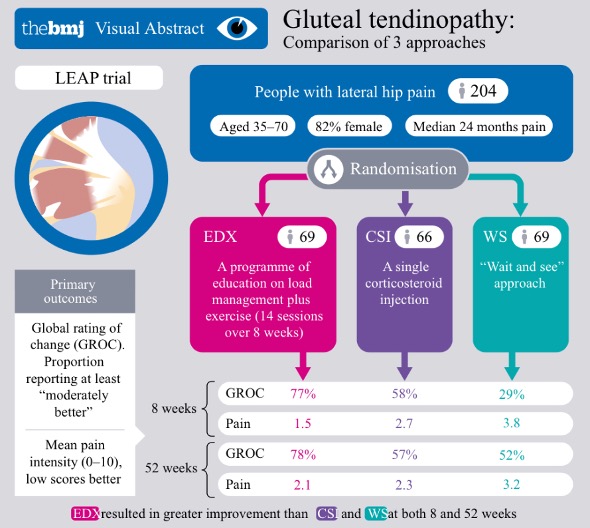
Recent studies, called the LEAP trial, have demonstrated the significant effectiveness of a physiotherapy exercise program for treating gluteal tendinopathy.
The study involved three different groups:
1) Education and exercise led by physiotherapists
2) Corticosteroid injections
3) Wait-and-see (resting) approach
The patients were monitored at 8, 12, 26, and 52 weeks. By 52 weeks, nearly 80% of those in the exercise and education group had successfully rehabilitated, which was notably better than the success rate of around 50% seen in both the corticosteroid injection and wait-and-see groups.
How to be diagnosed with Gluteal Tendinopathy?
Imaging can be helpful in confirming the diagnosis of gluteal tendinopathy and in ruling out other potential conditions, such as osteoarthritis, bursitis, or muscle atrophy.
However, clinical diagnostic tests based on symptoms, conducted by a physiotherapist, are typically sufficient to diagnose gluteal tendinopathy. This is because imaging alone can sometimes be misleading, as it may reveal tendon changes even in the absence of symptoms.
Clinical tests include:
1. Palpation
2. Hip joint
- FADER passive
- FADER (Patrick’s)
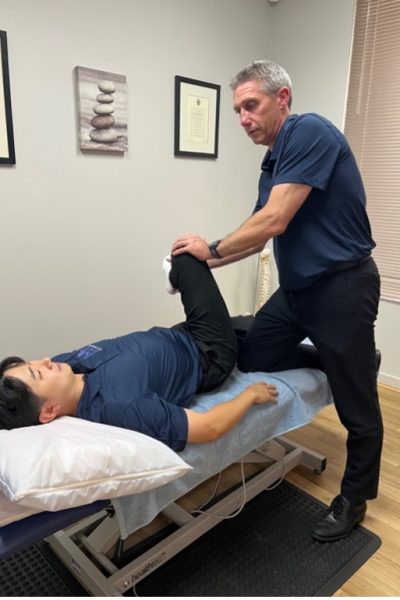
3. Muscle Strength testing
- Glute medius & Glute minimus
- Glute medius & Glute minimus
4. Muscle Length Testing
- Ober’s
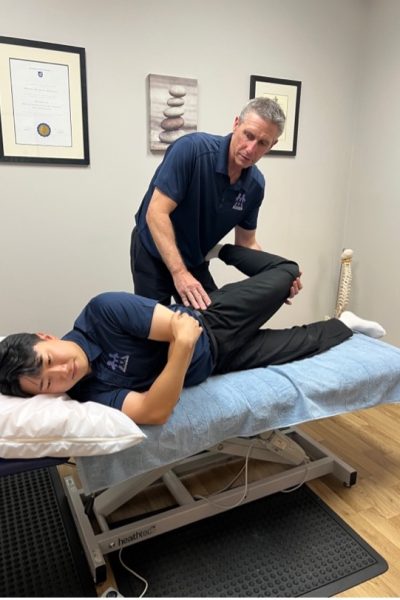
5. Functional testing
- Single leg stance for 30sec
How to manage Gluteal Tendinopathy?
There is a variety of non-surgical treatments recommended for gluteal tendinopathy such as anti-inflammatory medications, rest, stretching, strengthening exercises, ultrasound, shock-wave therapy, and corticosteroid injections. Most research focuses on corticosteroid injections. Corticosteroid injections had good short-term relief for hip pain, but over time the effect has been decreased. By 12 months, studies have found no difference in outcomes between patients who received an injection and those who simply waited to see if the condition improved on its own. Therefore, the most effective management strategy for gluteal tendinopathy remained uncertain.
However, as the LEAP trial studies concluded, education and physio guided exercises can be strongly recommended as this trial was significantly more effective in short term as well as long term management for gluteal tendinopathy.
What kinds of exercises?
These are some exercise examples that were included to the ‘Exercise and education’ group.
1. Static abduction
- Sitting
- Standing
- Mini squat
- Upright
2. Static abduction
- Double leg
- Offset bridging / Single leg bridging
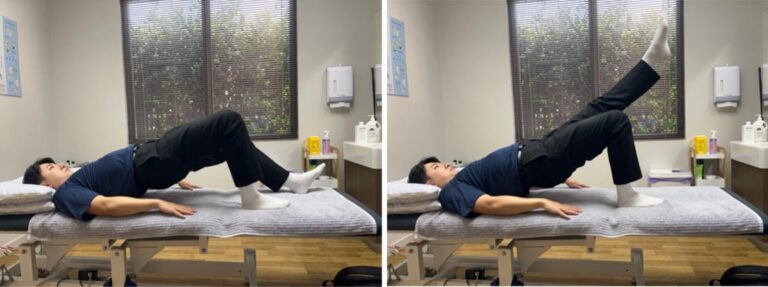
3. Squat
- Double leg / Offset squat
- Single leg
4. Abductor loading
- Side stepping
- Band side slides
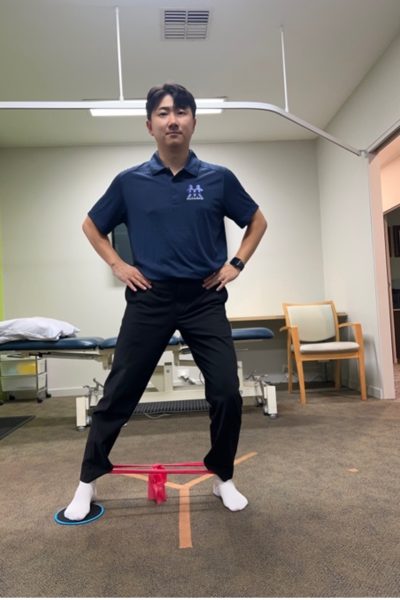
If you are the person who is experiencing this lateral hip pain, do not hesitate to call us. Physiotherapists are ready to help with evidence-based practice here at Health on Grange.
Author: Charlie Shin, Physiotherapist, Health on Grange Physiotherapy
References:
Cook, J. L., Rio, E., Purdam, C. R., & Docking, S. I. (2016). Revisiting the continuum model of tendon pathology: what is its merit in clinical practice and research?. British journal of sports medicine, 50(19), 1187-1191.
Mellor, R., Grimaldi, A., Wajswelner, H., Hodges, P., Abbott, J. H., Bennell, K., & Vicenzino, B. (2016). Exercise and load modification versus corticosteroid injection versus ‘wait and see’for persistent gluteus medius/minimus tendinopathy (the LEAP trial): a protocol for a randomised clinical trial. BMC musculoskeletal disorders, 17, 1-17.
Mellor, R., Bennell, K., Grimaldi, A., Nicolson, P., Kasza, J., Hodges, P., … & Vicenzino, B. (2018). Education plus exercise versus corticosteroid injection use versus a wait and see approach on global outcome and pain from gluteal tendinopathy: prospective, single blinded, randomised clinical trial. bmj, 361.
Woodley, S. J., Nicholson, H. D., Livingstone, V., Doyle, T. C., Meikle, G. R., Macintosh, J. E., & Mercer, S. R. (2008). Lateral hip pain: findings from magnetic resonance imaging and clinical examination. journal of orthopaedic & sports physical therapy, 38(6), 313-328.
